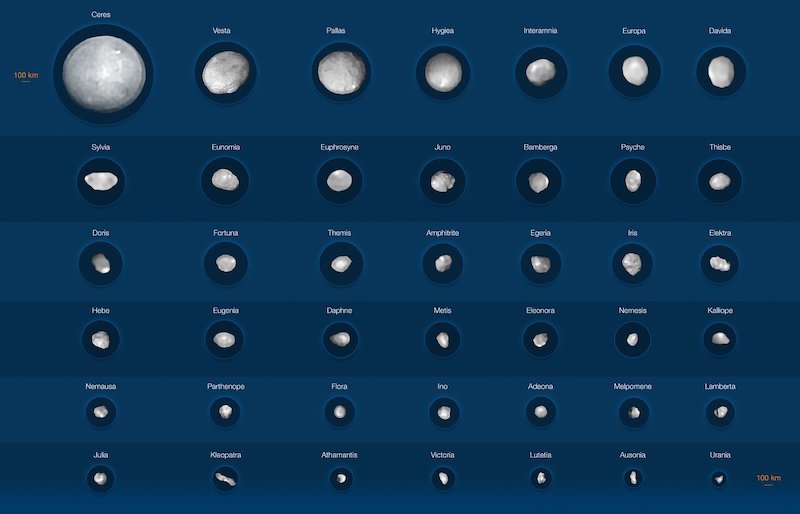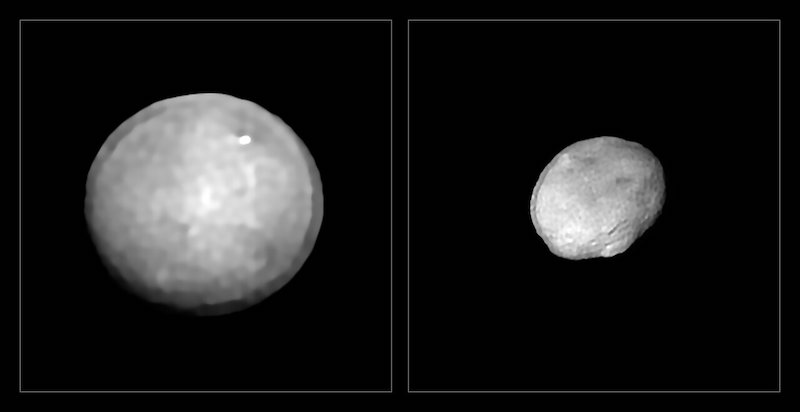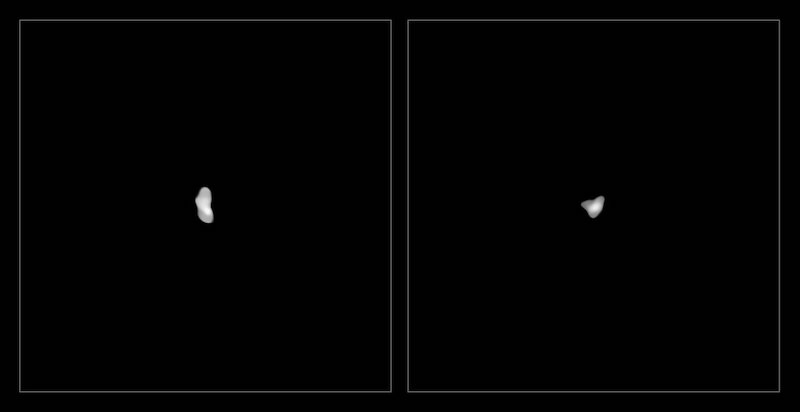
The main asteroid belt, between Mars and Jupiter, is composed of millions of rocky bodies, from pebbles to worlds the size of dwarf planets. Most are very difficult to see, even with the best telescopes, since they are so small and far away. This month (October 2021), astronomers with the European Southern Observatory (ESO) said they’ve obtained new images of 42 of the largest asteroids. The images show these asteroids with a level of detail not previously achieved by earthly telescopes.
The astronomers published the results of their imaging study in the peer-reviewed journal Astronomy & Astrophysics on October 12.
A new look at 42 of the largest asteroids
The astronomers used the Very Large Telescope (VLT) in Chile for these new images. The images reveal a wide variety of shapes, from spherical ones to some that look like dog bones. Pierre Vernazza, from the Laboratoire d’Astrophysique de Marseille in France, and his colleagues conducted a comprehensive survey of the largest bodies in the asteroid belt between 2017 and 2019. Only three of them have been imaged in great detail previously, by spacecraft, said Vernazza:
Only three large main belt asteroids, Ceres, Vesta and Lutetia, have been imaged with a high level of detail so far, as they were visited by the space missions Dawn and Rosetta of NASA and the European Space Agency, respectively. Our ESO observations have provided sharp images for many more targets, 42 in total.

Two families of asteroids
The asteroids are divided into two basic families: spherical and elongated. Ceres, for example, is nearly perfectly spherical (and also classified as a dwarf planet), while smaller Kleopatra looks like a dog bone.
Most of these 42 asteroids are larger than 62 miles (100 km) in size. The researchers also imaged 20 out of 23 of the asteroids larger than 124 miles (200 km).
Not only do the asteroids vary in shape, they also differ widely in density. At the low end, four of the asteroids have densities of about 1.3 grams per cubic centimeter (.75 ounce per cubic inch). That is approximately the density of coal. This includes the asteroids Lamberta and Sylvia. The two highest density asteroids are Psyche and Kalliope. They have densities of 3.9 and 4.4 grams per cubic centimeter, (2.25 and 2.5 oz/cubic in) respectively. To give a comparison, that’s higher even than diamond, which comes in at 3.5 grams per cubic centimeter (2 oz/cubic in).
Compositional clues
The researchers said that the various densities of the asteroids provides clues about where they came from and what they’re made of. Co-author Josef Hanuš at Charles University in Prague, Czech Republic, explained:
Our observations provide strong support for substantial migration of these bodies since their formation. In short, such tremendous variety in their composition can only be understood if the bodies originated across distinct regions in the solar system.

The researchers used the Spectro-Polarimetric High-contrast Exoplanet REsearch (SPHERE) instrument on VLT to better determine the shapes and other features of the asteroids. Co-author Laurent Jorda said:
With the improved capabilities of SPHERE, along with the fact that little was known regarding the shape of the largest main belt asteroids, we were able to make substantial progress in this field.
Future observations
Next, astronomers will be able to image these and other asteroids in even better resolution with the upcoming Extremely Large Telescope (ELT). The telescope is currently under construction and will begin operations later this decade. It will be a significant improvement over VLT, as Vernazza explained:
ELT observations of main-belt asteroids will allow us to study objects with diameters down to 35 to 80 kilometers [22 to 50 miles], depending on their location in the belt, and craters down to approximately 10 to 25 kilometers [6 to 16 miles] in size. Having a SPHERE-like instrument at the ELT would even allow us to image a similar sample of objects in the distant Kuiper Belt. This means we’ll be able to characterize the geological history of a much larger sample of small bodies from the ground.


How big are asteroids?
To get a better idea of the sizes of asteroids, you can watch a video here, from MeatBallStudios. It shows the relative sizes of 22 different asteroids, from the very small 2008 TC3 to huge Ceres.
Some of these asteroids are in the main asteroid belt, but 10 of them are what are called near-Earth objects. Some of those are also potentially hazardous, meaning there’s a chance they could hit Earth someday.
Bottom line: Astronomers with the European Southern Observatory (ESO) have obtained new and more detailed images of 42 of the largest asteroids in the main asteroid belt. They show a wide variety of shapes, from spherical to dog bone-like objects.
Source: VLT/SPHERE imaging survey of the largest main-belt asteroids: Final results and synthesis











